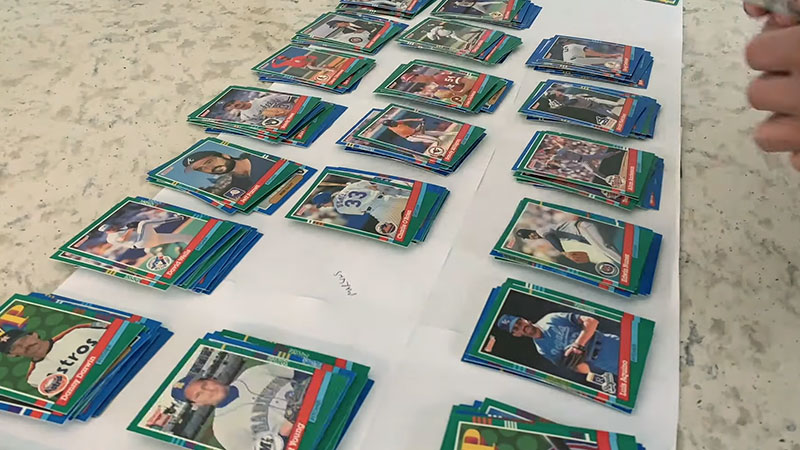Organizing baseball cards is a fulfilling endeavor for collectors of all ages, offering not only a means of preserving cherished memorabilia but also an opportunity to delve into the sport’s rich history.
This comprehensive guide will explore the step-by-step process of organizing baseball cards to maximize enjoyment and value.
From sorting and categorizing cards by player, team, or year to utilizing storage solutions that ensure long-term preservation, this guide will provide invaluable insights for novice and experienced collectors.
Whether you’re a seasoned enthusiast seeking to refine your collection or a newcomer eager to embark on this rewarding hobby, the following tips.
Also, you need to know techniques to help you create a well-organized and meticulously curated baseball card collection that reflects your passion for America’s pastime.
Understanding Your Collection of Organizing Baseball Cards
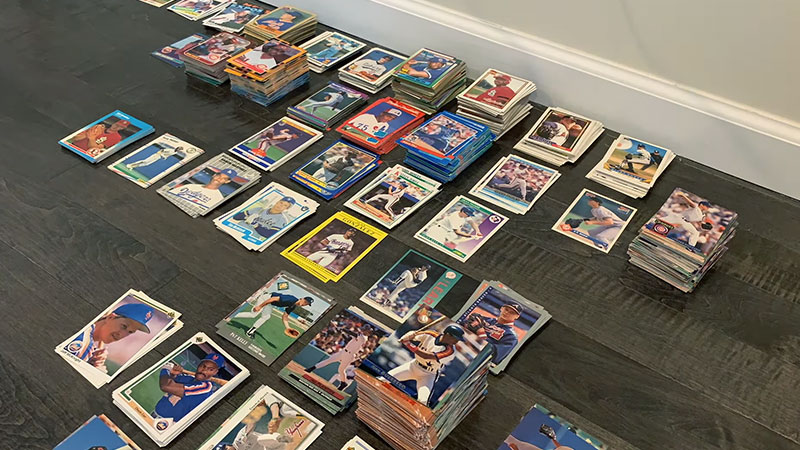
Understanding your collection of baseball cards is the crucial first step in organizing it effectively. Start by assessing the size and scope of your collection, noting any themes, favorite players, or special editions.
Next, consider your organizational preferences: Do you prefer sorting by player, team, year, or set?
Once you understand your collection and organizational goals, gather the necessary supplies, such as storage boxes, binders, or sleeves.
Begin sorting your cards into categories that make sense for you, keeping track of any duplicates or rare cards. Finally, consider cataloging your collection digitally to track and access card information quickly and easily.
By understanding and organizing your baseball card collection, you’ll preserve its value and enhance your enjoyment of this cherished hobby.
How to Sort Baseball Cards
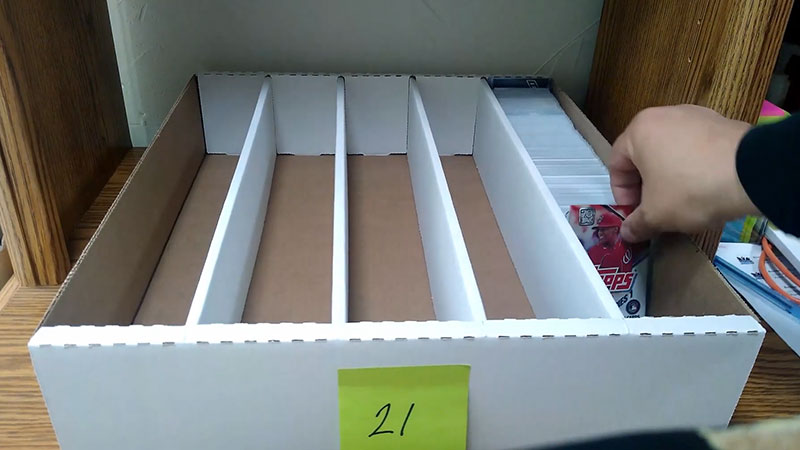
Sorting baseball cards is an essential step in organizing your collection. Here’s a step-by-step guide to the best way to sort baseball cards:
- Gather Your Supplies: Collect the necessary supplies, such as storage boxes, binders, dividers, or card sleeves, to organize and protect your cards.
- Choose Sorting Criteria: Decide the criteria to sort your cards. Standard options include player name, team, year, set, or card number.
- Set Up Your Workspace: Find a clean and well-lit area to work on sorting your cards. Ensure you have enough space to spread out and organize your collection comfortably.
- Start Sorting: Begin by sorting your cards into broad categories based on your chosen criteria. For example, if sorting by player, create separate piles or sections for each player’s cards.
- Refine Your Sorting: Once you’ve sorted your cards into broad categories, refine your organization by sub-sorting within each category. For instance, alphabetize player cards or sort by team divisions.
- Handle Cards Carefully: Be gentle when handling your cards to avoid damaging them. Hold cards by the edges and avoid bending or creasing them.
- Check for Duplicates or Errors: Watch for duplicate cards or errors as you sort. Set aside any duplicates for trading, selling, or storing separately.
- Document Your Collection: Consider cataloging your collection digitally or keeping a written inventory to track the cards you have and their condition.
- Store Your Cards: Once sorted, store your cards in appropriate storage solutions such as binders, boxes, or sleeves to keep them organized and protected.
- Maintain Your Organization: Regularly revisit and update your sorting system as your collection grows or changes. This will help you maintain an organized and manageable collection over time.
By following these steps, you can effectively sort your baseball card collection and create a well-organized system that enhances your enjoyment of the hobby while preserving the value of your cards.
How To Organize Baseball Cards
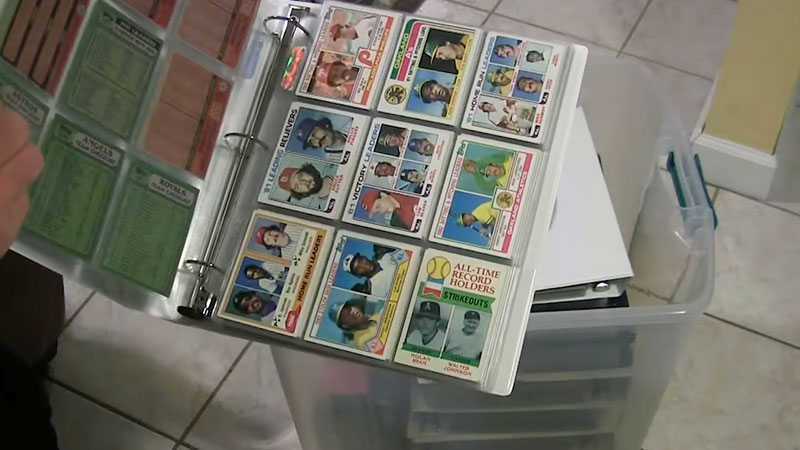
You must know the best way to organize sports cards. To organize baseball cards effectively, follow these steps:
- Gather Supplies: Collect storage options like binders, boxes, or sleeves.
- Choose Sorting Criteria: Sort by player, team, year, or set.
- Set Up Workspace: Find a clean, well-lit area to work.
- Start Sorting: Group cards into broad categories based on your chosen criteria.
- Refine Organization: Further sort within categories, like alphabetizing player cards.
- Handle Carefully: Avoid damaging cards; hold them by the edges.
- Check for Duplicates: Set aside duplicates or errors.
- Document Collection: Consider cataloging digitally or keeping a written inventory.
- Store Properly: Use appropriate storage solutions to protect cards.
- Maintain Organization: Regularly update and adjust your system.
Following these steps, you can organize your baseball cards efficiently and maintain a well-organized collection.
How to Organize Baseball Cards to Sell?
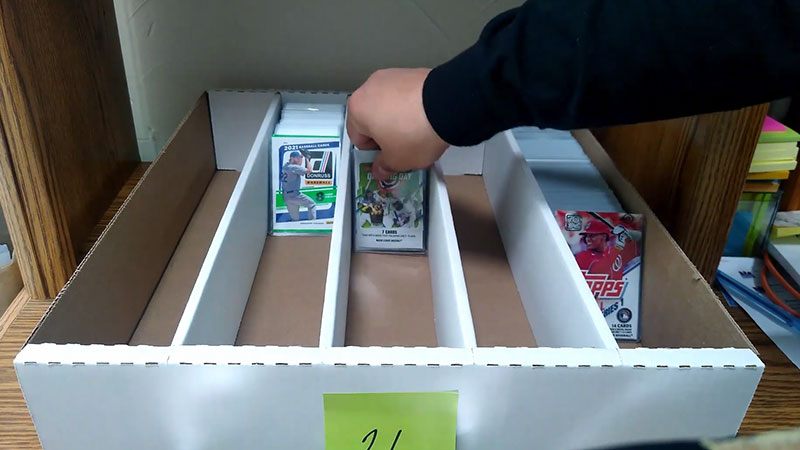
Organizing baseball cards for sale requires careful planning and execution to maximize their value and appeal to potential buyers.
Whether you’re a seasoned collector looking to downsize your collection or someone who stumbled upon a treasure trove of cards, effective organization is essential for a successful selling experience.
In this comprehensive guide, we’ll detail the steps to organize baseball cards for sale.
Assess Your Collection
Before diving into the organization process, take some time to assess your collection thoroughly. Determine the scope of your collection, including the number of cards, their condition, and any notable players or sets.
Sort by Value
Begin by sorting your cards into categories based on their potential value. This could include rookie cards, Hall of Famers, vintage cards, or unique edition sets—research current market trends and pricing guides to identify cards with higher resale value.
Grade Your Cards
Assess the condition of each card in your collection and assign a grade based on industry standards.
Factors such as corners, edges, centering, and surface condition contribute to a card’s overall grade. Consider investing in professional grading services for valuable cards to increase buyer confidence.
Organize by Category
Once you’ve sorted and graded your cards, organize them into categories for more straightforward navigation.
Use dividers or tabs to create sections within storage containers, labeling them with the corresponding categories, such as player names, teams, or card sets.
Create Listings
Take detailed photos of your cards, highlighting any key features or imperfections.
Write accurate and descriptive listings for each card, including relevant information such as player name, card number, year, condition, and notable characteristics. Provide clear and honest descriptions to build trust with potential buyers.
Set Prices
Research recent sales data and market trends to determine competitive card prices.
Consider factors such as condition, rarity, and demand when setting prices. Be open to negotiation but also establish minimum acceptable prices to ensure a fair return on your investment.
Utilize Online Platforms
Take advantage of online marketplaces and auction sites to reach a broader audience of potential buyers. Platforms like eBay, COMC, and Sportlots offer convenient ways to list and sell your cards while connecting with collectors worldwide.
Promote Your Listings
Increase visibility for your listings by promoting them through social media channels, forums, and collector communities. Share high-quality images and detailed descriptions to attract potential buyers and generate interest in your cards.
Provide Excellent Customer Service
Communicate promptly and professionally with potential buyers, addressing any inquiries or concerns they may have.
Package cards securely and ship them promptly upon receiving payment, ensuring a positive buying experience for your customers.
Evaluate and Adjust
Monitor the performance of your listings regularly and adjust your strategies as needed. Pay attention to buyer feedback and market trends to optimize your selling approach and maximize your success.
By following these steps, you can effectively organize your baseball cards for sale and increase your chances of achieving a successful and profitable selling experience.
Remember to approach the process with patience, diligence, and a commitment to exceptional customer service.
With careful planning and execution, you can turn your baseball card collection into a valuable asset and share your passion for the hobby with collectors worldwide.
FAQs
What is the best way to organize baseball cards?
The best way to organize baseball cards is by sorting them systematically, typically by player, team, year, or set. Storage solutions such as binders, boxes, or albums with protective sleeves are used to keep cards organized and preserved.
Consider categorizing cards alphabetically, numerically, or by specific criteria that suit your collection preferences.
How to organize sports cards?
Organizing sports cards involves sorting them methodically by sport, player, team, or year. Use dividers or tabs to create sections within storage containers and label them accordingly.
Utilize storage solutions like binders, boxes, or card sleeves to keep cards protected and easily accessible. Regularly update and maintain your organization system as your collection grows.
What is the best way to catalog baseball cards?
The best way to catalog baseball cards is by creating a detailed inventory with essential information such as player name, team, year, card manufacturer, and condition.
Use spreadsheet software or specialized cataloging apps to input and track card data systematically. Consider including additional details like card variations, serial numbers, and market value for comprehensive cataloging.
Wrapping Up
Organizing baseball cards is a rewarding endeavor that allows collectors to preserve cherished memorabilia and delve into the sport’s rich history.
By following the step-by-step guidelines outlined in this guide, collectors can create a well-organized and meticulously curated collection that reflects their passion for baseball.
Whether sorting cards by player, team, or year, utilizing storage solutions to protect cards, or cataloging them systematically, these techniques ensure that every card is valued and accessible.
With a carefully organized collection, collectors can enjoy their cards to the fullest and share their enthusiasm with fellow collectors and future generations, preserving the legacy of America’s pastime for years to come.

